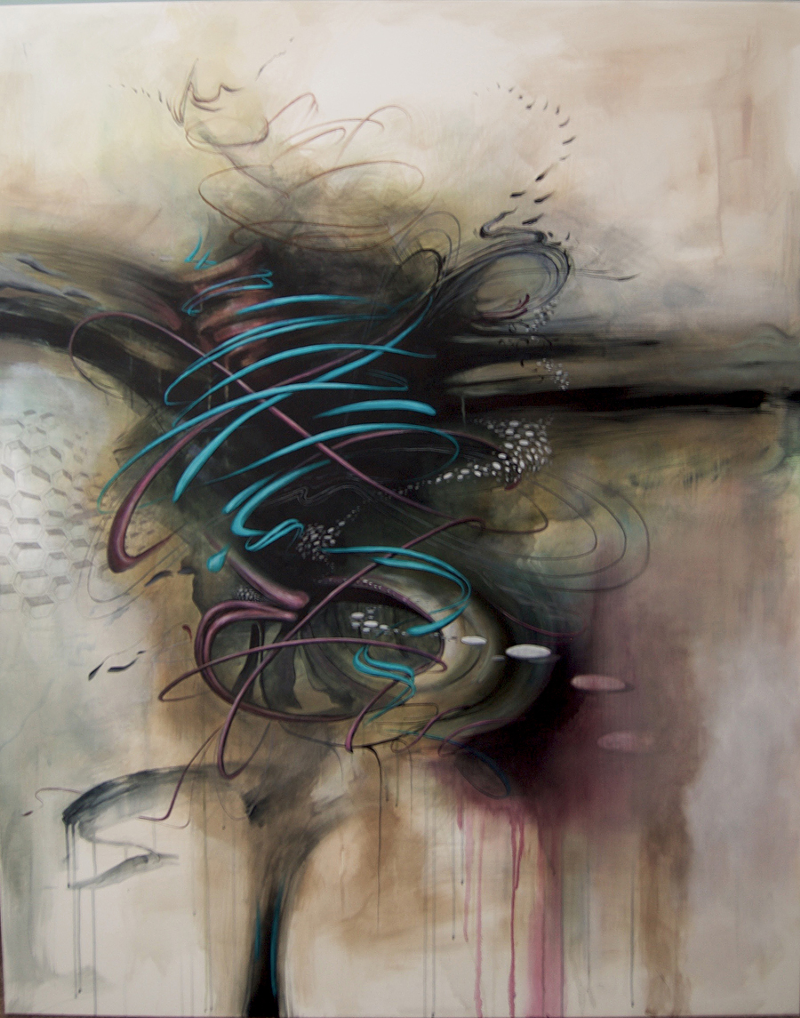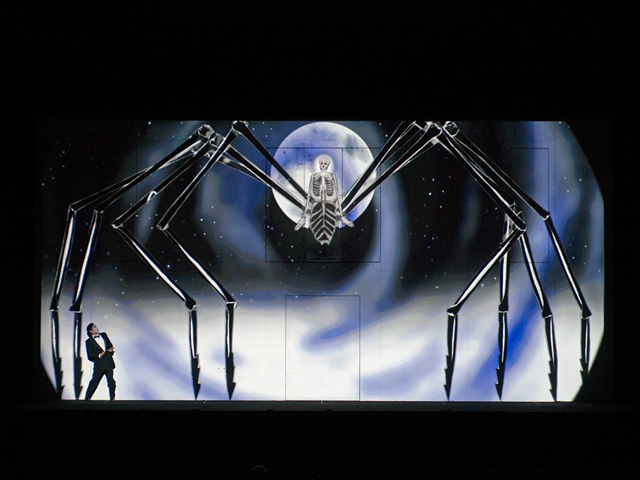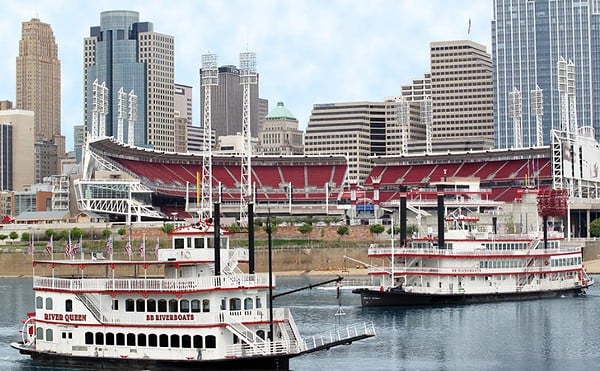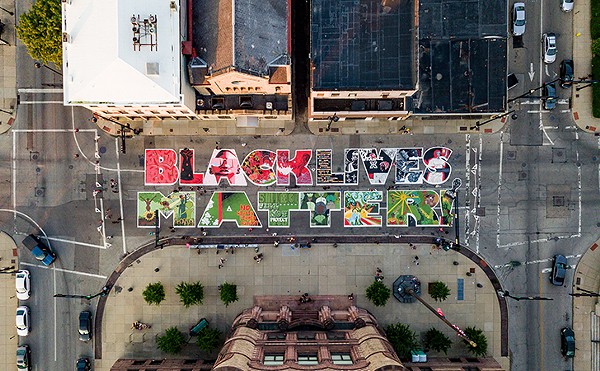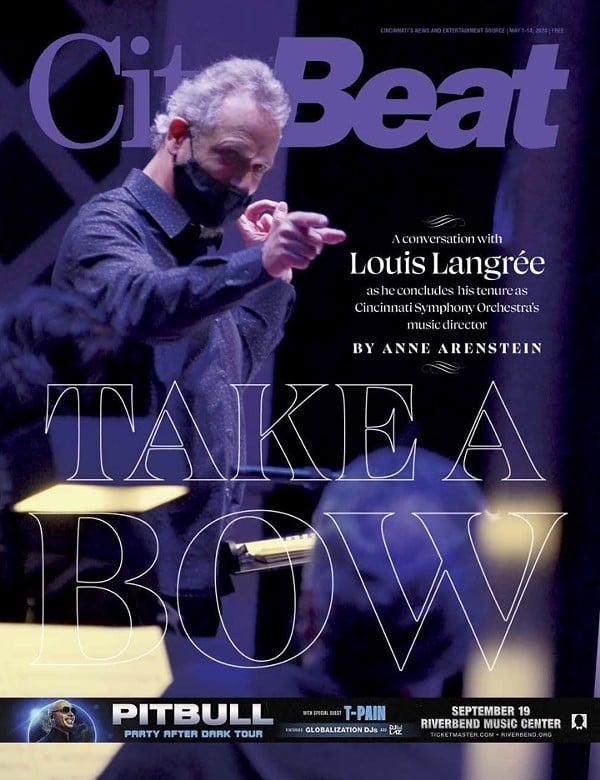The show’s title comes from the lyrics of the Rolling Stones’ song “Shattered,” which urges the listener to “Go ahead, bite the Big Apple, don’t mind the maggots.” This is an example, the gallery says, of “the image of nature resisting our over-development in big cities” and thus fitting for this show.
Artist and Cincinnati Art Underground creative director Andrey Kozakov curated the show. This is the first of such endeavors at the gallery’s 800-square-foot space on Main Street (or anywhere, actually) for Kozakov, who learned about fine art as a child from his artist-father.
When I visited, gallery director Rachael Moore showed me one of Kozakov’s architectural sculptures, which clarified the curator’s connection to the three artists in Shadoobie. Though it’s not officially a piece in the show, Kozakov’s cabinet-like object could easily have been included.
For Estenfelder’s and Redder’s works, the two advance the conflation between natural and human-made forms from different sides of the same coin. As Kozakov describes, “You see both sides of the same idea.”
Some of Estenfelder’s more recent paintings are common subjects: a portrait, a composed still life. But prior to painting, Estenfelder distorts the images via computer manipulation until they’re virtually unrecognizable, rendering them abstract yet retaining hints of form and structure.
In Estenfelder’s oil-on-canvas “Points to Three,” for example, details of color and pattern reveal implications of what once might have been clear — the draping of a checkerboard tablecloth, a sprig of green figs, the rococo insides of a fully bloomed flower — but have been distorted like a reflection in a funhouse mirror.
As painters often do, Estenfelder radically experiments with form and color, using traditional subjects to say something about painting rather than merely depicting the subjects themselves. Think of Modernists like Matisse and Picasso, who often painted both nudes and landscapes, but the subject matter was never actually those nudes or landscapes — it was about what the artist could do with paint upon a canvas.
Likewise, Redder’s artistic output in Shadoobie seems equally interested in formal investigation. He pursues it with materials, playing upon the show’s curatorial framework of humanity’s mark on our natural environment.
Several of his more successful works in Shadoobie — “It’s Just Cake, Sugar Babe,” “Rotation of Crops” and “Adam’s Finger” — employ remnants of human habitation upon the land: caulking, foam, wall anchors and oversized pieces of building insulation that the artist has sliced, peeled or written upon.
“Rotation of Crops” and “Adam’s Finger,” both executed with insulation foam, read as landscape and graffiti, collapsing the idea of surface and object to become the wall itself.
Nearly a dozen of Combs’ diminutive sculptures, located on two pedestals near the front of the gallery, also engage with building materials — they are carved from pottery plaster. The pieces can resemble both architectural hardware and organic forms. Half of the pieces, which prominently feature smoothed-out flanges that look as soft as sand, are painted; the other half are left bare. Kozakov explains that Combs mixes acrylics with solvents to give the paint a kind of “bubble effect” and then applies a clear coat to protect it.
This small exhibition, though not necessarily a conceptual revelation, does well to provide viewers with the impression of what the work of any of these three talented artists might look like in one’s home. And for talented artists like Combs, Estenfelder and Redder, giving the public more opportunities to encounter (and potentially purchase) their work can itself be revelatory.
SHADOOBIE runs through July 22 at Cincinnati Art Underground, 1415 Main St., Over-the-Rhine. More info: cincinnatiartunderground.com.

